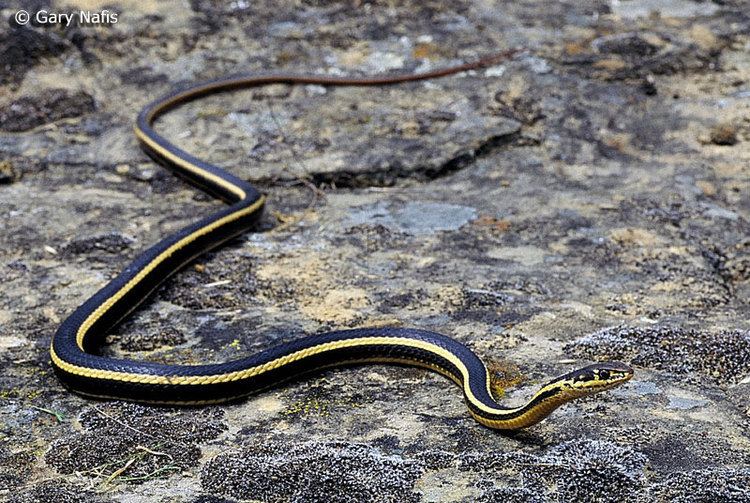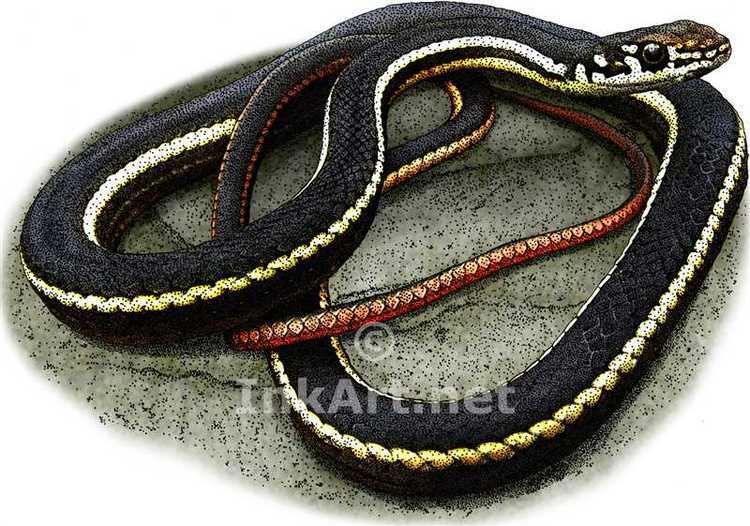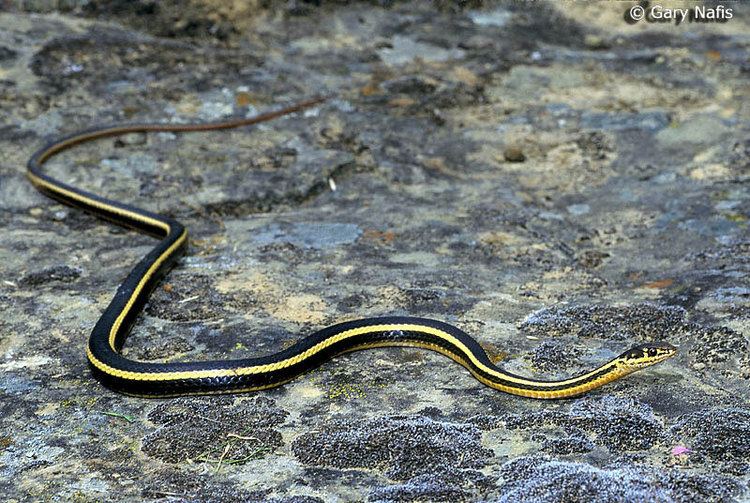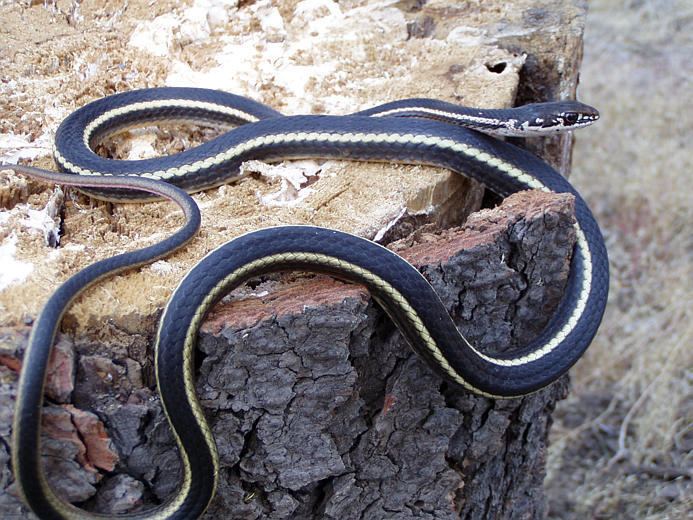Rank Species | Phylum Chordata Suborder Serpentes Genus Masticophis Higher classification Masticophis | |
 | ||
Similar Snake, Masticophis, Reptile, Striped whipsnake, Masticophis flagellum | ||
Striped racer or california whipsnake
The California whipsnake (Masticophis lateralis) and also known as the striped racer, is a colubrid snake found in habitats of the coast, desert, and foothills of California.
Contents

Description

M. lateralis is 90–120 centimetres (3.0–3.9 ft) long. It is slender, with two yellowish stripes along its back, set against a dark brown or black back.

California whipsnakes are known to eat a variety of live animals including insects, lizards, snakes, birds, and small mammals. They show a strong preference for lizards, which are captured by a grasp of the mouth. They grab their prey and swallow it alive.

This species is fast-moving, diurnal, and an active forager. It commonly moves over and through brush and trees to avoid predation and to capture prey. The California whipsnake has been observed moving into the top of scrub plants after emerging from nightly retreats to gain access to direct sunlight before the sunlight reached ground level.
It is not venomous, but likely to strike if captured.
Taxonomy
As with many species and subspecies, taxonomic reclassification is an ongoing process, and differing sources often disagree. The genus Masticophis may soon be absorbed by the closely related genus Coluber, which contains the racer (Coluber constricter).
Subspecies
Masticophis lateralis has two subspecies:
Distribution
The California whipsnake, M. lateralis, is known to use a wide range of habitat types including open desert, California oak woodland, pine forest, chaparral, and associated open landscape habitats.
The range of the Alameda whipsnake subspecies is contiguous in the area of southern Alameda County, northern Santa Clara County, and western San Joaquin County, in the southeastern Bay Area of Northern California. It has commonly been reported as having a more specific association with chaparral and scrub plant communities as the habitat where it is most commonly found.
The chaparral whipsnake subspecies range has been reported to include woodlands, grasslands, chaparral scrublands, and riparian habitats.
